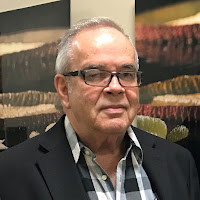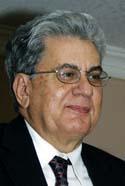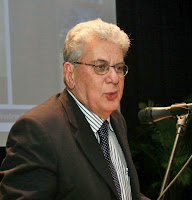¿QUÉ OCURRIRÁ EN EL VATICANO DURANTE LA VISITA DE TRUMP AL PAPA FRANCISCO?

What will
happen at the Vatican when Trump meets Pope Francis?

Joshua
J. McElwee | May. 22,
2017 Trump Abroad
Analysis Vatican City
Papal visits with
heads of state are carefully arranged bits of political and religious theater.
They follow a specific and routine schedule, with little room for deviation or
unwanted surprises.
While the
royalty, president or prime minister making the trip to the Vatican may fret
the details, sending teams months in advance to plan out each moment, the
city-state's objectives are clear: protect the pope's image and influence, and
then fade into the background to let the pope handle the meeting as he wants.
As Ken Hackett,
the most recent U.S. ambassador to the Holy See, said in a recent interview:
"From the Vatican's point of view, it's pretty normal fare for them to
deal with heads of state. They've been doing it for centuries. They know
exactly what they will do and can do."
When U.S.
President Donald Trump arrives to meet Pope Francis on the morning of May 24,
he will be escorted through a series of rooms in the apostolic palace meant to
impress upon him the Vatican's historic power and majesty. As he walks, he will
pass Swiss Guards in full regalia, standing at attention holding long pole
weapons known as halberds.
One of the last
rooms the president will enter before meeting the pope is the Sala Ambrogio, named for the third
century saint and bishop, and distinctive for its decorate Renaissance-era
triptych of Christ's death and resurrection and for containing a large rug
decorated with the coat of arms of Pope Leo XIII.
Francis and Trump
will meet first briefly in the antechamber of the papal library, where the pope
hosts all his formal encounters with heads of state. The two will shake hands
there, where a small pool of about five photographers and two print journalists
may be able to hear their first words to each other.
Francis will then
escort Trump into the library itself, where the two will sit at a large wooden
desk across from each other. The journalists are allowed to remain present for
the very beginning of the encounter, able to note the details: Is the pope
leaning forward in his chair, engaged in the conversation? Are his hands
folded, or is gesturing with them? Is he smiling?
After about 30 seconds, everyone but the president, the pope and a
translator will be escorted out of the room. No one else will be present for
the conversation to follow, meaning no one else can say what happened in the
room.
Waiting in
another small antechamber, the journalists will begin marking minutes in order
to be able to note the exact time, down to the second, that the two leaders
spend in private conversation.
A normal meeting
is between 20-30 minutes. President Barack Obama, known to have worked well
with Francis, spent more than 50 minutes with the pontiff in their March 2014
meeting. Former Canadian Prime
Minister Stephen Harper, not known
to have enjoyed such a relationship, had less than 10 minutes in June 2015.
Once the private
encounter is over, the journalists will be ushered back into the library to
witness the formal exchange of gifts between Francis and Trump.
At that point,
Trump's entourage ? likely to include First Lady Melania, daughter Ivanka, and
son-in-law/aide- de-camp Jared Kushner ? will also be allowed in and presented
one-by-one to greet the pope, each having a short moment with the pontiff to
shake his hand and receive a rosary blessed by him.
The pope and
president will then walk towards a small table together, where the gifts will
be laid out for presentation. Francis normally gives heads of state copies of
his three major writings: Evangelii
Gaudium, Laudato Si', and Amoris Laetitia.
The pope also
normally gives political leaders a medallion of some-sort, which is usually
imbued with a specific message. In his March meeting with Myanmar's Aung San Suu Kyi [1],
for example, Francis gave her a 7.5- inch-wide bronze medallion showing a
desert turning to bloom in a depiction of the Old Testament prophet Isaiah's
words: "The wilderness will become a fruitful field."
"The dry,
thorny branch that blossoms and bears fruit symbolizes the passage from
selfishness to sharing, from war to peace," the Vatican said in an
explanation of that piece, interpreted as a message from the pope about
Myanmar's continuing process of democratic reform following a half-century of
military rule.
It's up to Trump
and his administration to determine ahead of time what to give Francis. The
pope normally appears to appreciate gifts that are simple, or creative.
Obama, for
example, gave the pontiff seeds from the White House Garden, later planted at
the historic papal retreat in Castel Gandolfo. Samoan Prime Minister Tuilaepa
Aiono Sailele Malielegaoi elicited a big smile from Francis in December 2015
when he presented a set of fishing hooks traditionally used by his people.
After the
exchange of gifts ? which will be another chance for journalists to note the
pope's and president's demeanor towards each other as they briefly explain what
they are giving ? the meeting comes to an end. Francis will briefly greet each
member of Trump's entourage again as they walk out of the library, leaving the
president for last.
As Trump leaves
Francis, he will be escorted again through the apostolic palace into a separate
room for meetings with Vatican Secretary of State Cardinal Pietro Parolin and
Archbishop Paul Gallagher, the secretary for relations with states.
Hackett said that is normally the
meeting where the most serious business takes place.
"There's a
difference between the meeting with the Holy Father and the meeting with
Cardinal Parolin and Archbishop Gallagher," said the former ambassador,
adding that he would advise Trump: "On the geopolitical side of things,
keep it with Cardinal Parolin and Gallagher."
After witnessing
Trump and Parolin greet each other, the journalists will be escorted out of the
apostolic palace and will rush back across St. Peter's Square to the press
office to brief their colleagues on what has happened, providing any juicy
details of what they could hear the pope and president say.
All will then
wait for the Vatican to put out an official statement summarizing the
discussions between Trump, Francis, and Parolin. Normally, such statements are
brief and bland; no more than a paragraph or two and nothing more specific than
describing "cordial conversations" that addressed "various
themes of common interest."
Many surely will also be
carefully monitoring Trump's Twitter feed, watching for his version of events.
[Joshua J.
McElwee is NCR Vatican correspondent.
His email address is jmcelwee@ncronline.org [2]. Follow him on Twitter:
@joshjmac [3].]
Show comments
National Catholic
Reporter uses Civil Comments. Please keep your comments on-topic, focus on the
issue and avoid personal insults, harassment and abuse. Read the user
guide [4].
Source URL (retrieved on 05/22/2017 - 14:47): https://www.ncronline.org/news/vatican/what-will-happen-
vatican-when-trump-meets-pope-francis
Links:
[1] https://www.ncronline.org/news/vatican/vatican-myanmar-establish-full-relations-after-francis-suu-kyi-
meeting-thursday





Comentarios
Publicar un comentario